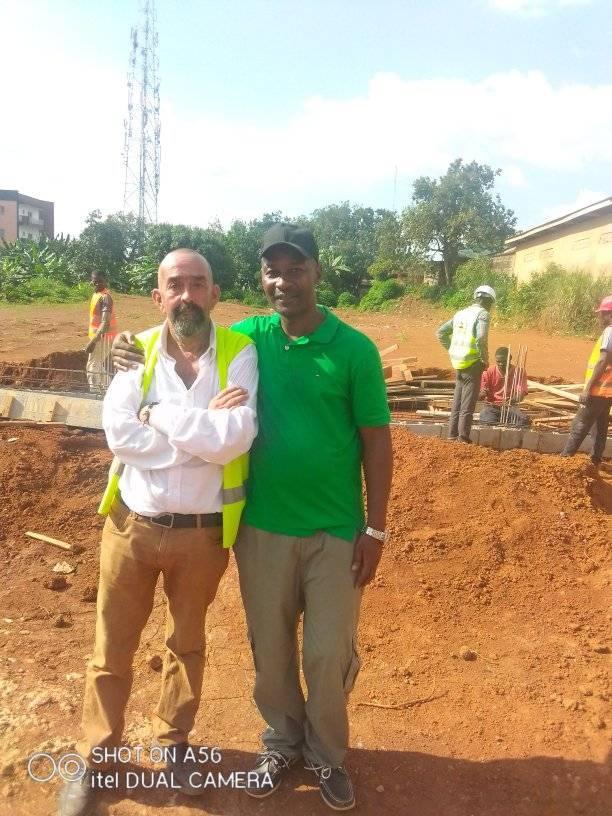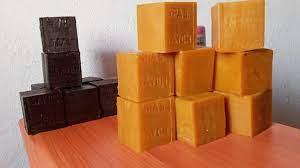Génie civil - Civil engineering - Bauingenieurwesen

17/02/2023
(Français) Les étapes de la réalisation d’une fondation
Le nettoyage du terrain
La démarche suivie par les professionnels dans la réalisation de la fondation commence toujours par le nettoyage du terrain. La terre naturelle stockée pourra, par la suite, servir à d’autres opérations, comme l’aménagement du jardin ou le remblaiement du chantier.
Dans le cadre de l’organisation du chantier, il faut prévoir des espaces pour le passage des engins, les stationnements, l’entreposage des matériaux, la place des tranchées d’électricité et d’eau…
Le piquetage
Cette étape consiste à délimiter les points cadastraux du terrain. À ce stade de la construction, il est important de contacter un géomètre pour mieux préciser les limites de votre propriété. Un terrassier est en charge du matériel nécessaire à cette opération. Il relève le niveau général du terrain avec une lunette de nivellement. Cela permet de calculer les points de références de plusieurs zones du terrain. Du plâtre en poudre servira à délimiter votre terrain.
Le terrassement
Vous arrivez à cette phase quand les vérifications de la stabilité du terrain ont été effectuées. Dans le terrassement, il y a les fouilles à faire, le nivellement du terrain, la pose de canal d’évacuation d’eau et des encaissements des raccordements. Il y a les travaux d’assainissement (fosse septique, drains…).
Les adducteurs sont idéalement construits en béton afin de mieux résister au temps et aux chocs. Ils sont bien inclinés et larges. Les raccordements sont, quant à eux, en ciment pour éviter les fissurations. Afin de prévenir les soucis pour les tuyaux, le maçon prévoit plusieurs regards.
Le drainage
Le drainage est une action permettant l’évacuation des eaux excessives du sol. Cela se fait avec des tuyaux souterrains recouverts de produits traitants (pierre ou encore feutre géotextile). Le drainage s’installe généralement tout autour de la maison avant même que les allées soient mises en place. Un drain est posé à côté des parois de fondation pour la reconduction rapide des eaux de pluie.
Le raccordement d’électricité et d’eau
L’avant-dernière étape concerne le raccordement. Elle consiste à relier les raccords destinés à recueillir les câbles électriques et les canaux de l’alimentation en eau. Mis à part ces éléments à consommer quotidiennement, il y a les câbles téléphoniques, Internet et télévision, le conduit de gaz ainsi que les égouts. Deux options s’offrent au propriétaire en ce qui concerne la place de certains de ces raccords. La première est le câblage aérien. La seconde touche leur installation enterrée. La plupart de ces ouvrages respectent scrupuleusement des normes bien définies. (voir: terrassier)
Le remblaiement
Quand on a enlevé de la terre pour les creusages, il reste de ce fait une grande quantité de terre non utilisée. Effectivement, elle est beaucoup plus volumineuse quand elle n’occupe plus sa place initiale grâce au phénomène de foisonnement. Elle peut servir au remblaiement (rendre le terrain plat) dans ce cas. Il est bon de savoir que les fondations existent en trois principaux types en fonction du terrain sur lequel on va construire la maison :
Les fondations superficielles se destinent au sol stable et avec une bonne capacité de portance ;
Les fondations semi-profondes quand le sol dur capable d’assurer une stabilité à la maison se trouve à environ 5 mètres de profondeur.
Au-delà de 6 ou 7 mètres, on parle de fondations profondes.
Les travaux de fondations se réalisent en outre en deux principales étapes :
Il faudra tout d’abord commencer par préparer le béton que l’on servira de fondations. Ici, on doit notamment mélanger les divers éléments qui composeront les fondations dans une bétonnière. On parle plus précisément ici de l’eau, du ciment, du sable et du gravier.
Une fois que le béton est prêt, il faudra le couler. Le matériel dont on a besoin ici est d’un camion-toupie. Néanmoins, si votre bétonnière est équipée d’un godet, elle fera très bien l’affaire. Versez alors le béton dans le coffrage ou sur le ferraillage et utilisez une pelle pour l’étaler sur la surface.
(English) The stages of building a foundation
Land cleaning
The approach followed by the professionals in the realization of the foundation always begins with the cleaning of the ground. The stored natural earth can then be used for other operations, such as landscaping the garden or backfilling the site.
As part of the organization of the site, it is necessary to provide spaces for the passage of machines, parking lots, storage of materials, the place of the electricity and water trenches ...
Picketing
This step consists in delimiting the cadastral points of the land. At this stage of construction, it is important to contact a surveyor to better define the boundaries of your property. A terrassier is in charge of the equipment necessary for this operation. It raises the general level of the terrain with a leveling scope. This makes it possible to calculate the reference points of several areas of the terrain. Powder plaster will be used to delimit your land.
Earthworks
You reach this phase when the ground stability checks have been carried out. In earthworks, there are excavations to be made, leveling of the ground, laying of water drainage channel and collection of connections. There is sanitation work (septic tank, drains ...).
Adductors are ideally constructed of concrete to better withstand time and impact. They are well inclined and wide. The connections are made of cement to avoid cracking. In order to prevent worries about the pipes, the mason plans several looks. The draining
Drainage is an action allowing the evacuation of excessive water from the soil. This is done with underground pipes covered with treatment products (stone or even geotextile felt). Drainage is usually installed all around the house even before the aisles are in place. A drain is placed next to the foundation walls for the rapid renewal of rainwater.
Electricity and water connection
The penultimate step concerns connection. It consists in connecting the fittings intended to collect the electric cables and the water supply channels. Aside from these items to be consumed daily, there are telephone cables, Internet and television, the gas pipe as well as the sewers. There are two options available to the homeowner regarding the location of some of these fittings. The first is overhead wiring. The second concerns their buried installation. Most of these works scrupulously respect well-defined standards. (see: terrassier)
Backfilling
When soil has been removed for digging, a large amount of unused soil remains. Indeed, it is much more voluminous when it no longer occupies its original place thanks to the phenomenon of proliferation. It can be used for backfilling (making the ground flat) in this case. It is good to know that foundations exist in three main types depending on the land on which we will build the house:
The surface foundations are intended for stable soil and with good bearing capacity;
Semi-deep foundations when the hard soil capable of providing stability at home is about 5 meters deep.
Beyond 6 or 7 meters, we speak of deep foundations. Foundation works are also carried out in two main stages:
The first step will be to prepare the concrete that will be used as foundations. Here, we must notably mix the various elements that will make up the foundations in a concrete mixer. We are talking more specifically here about water, cement, sand and gravel.
Once the concrete is ready, it will have to be poured. The equipment we need here is a mixer truck. However, if your concrete mixer has a bucket, it will do just fine. Then pour the concrete into the formwork or over the reinforcement and use a shovel to spread it over the surface.
(Deutsch) Die Etappen des Aufbaus eines Fundaments
Landreinigung
Die Vorgehensweise der Profis bei der Realisierung des Fundaments beginnt immer mit der Reinigung des Bodens. Die gelagerte Naturerde kann dann für andere Zwecke genutzt werden, beispielsweise für die Gartengestaltung oder die Verfüllung des Geländes.
Im Rahmen der Standortorganisation ist es erforderlich, Räume für die Durchfahrt von Fahrzeugen, Parkplätze, die Lagerung von Materialien, den Ort der Strom- und Wassergräben ... zur Verfügung zu stellen.
Streikposten
Dieser Schritt besteht in der Abgrenzung der Katasterpunkte des Landes. In dieser Bauphase ist es wichtig, sich an einen Vermesser zu wenden, um die Grenzen Ihres Eigentums besser zu definieren. Ein Terrassier ist für die Ausrüstung verantwortlich, die für diese Operation erforderlich ist. Es erhöht das allgemeine Niveau des Geländes mit einem Nivellierungsbereich. Dadurch ist es möglich, die Referenzpunkte mehrerer Geländebereiche zu berechnen. Puderpflaster wird verwendet, um Ihr Land abzugrenzen.
Erdarbeiten
Sie erreichen diese Phase, wenn die Bodenstabilitätsprüfungen durchgeführt wurden. Bei Erdarbeiten sind Ausgrabungen, Nivellierung des Bodens, Verlegung von Entwässerungsrinnen und Sammeln von Anschlüssen erforderlich. Es gibt sanitäre Arbeiten (Klärgrube, Kanalisation ...).
Adduktoren sind idealerweise aus Beton gefertigt, um Zeit und Stößen besser standzuhalten. Sie sind gut geneigt und breit. Die Verbindungen bestehen aus Zement, um Risse zu vermeiden. Um Sorgen um die Rohre zu vermeiden, plant der Maurer mehrere Looks. Entwässerung
Entwässerung ist eine Maßnahme, mit der übermäßiges Wasser aus dem Boden abgeleitet werden kann. Dies geschieht mit unterirdischen Rohren, die mit Behandlungsmitteln (Stein oder sogar Geotextilfilz) überzogen sind. Die Entwässerung wird in der Regel rund um das Haus installiert, noch bevor die Gänge vorhanden sind. Neben den Grundmauern befindet sich ein Abfluss für die schnelle Erneuerung des Regenwassers.
Strom- und Wasseranschluss
Der vorletzte Schritt betrifft die Verbindung. Es besteht aus dem Anschluss der Armaturen zum Sammeln der Elektrokabel und der Wasserversorgungskanäle. Neben diesen Artikeln, die täglich konsumiert werden, gibt es Telefonkabel, Internet und Fernsehen, die Gasleitung sowie die Kanalisation. Für den Standort einiger dieser Armaturen stehen dem Hausbesitzer zwei Optionen zur Verfügung. Das erste ist die Überkopfverkabelung. Die zweite betrifft ihre vergrabene Installation. Bei den meisten dieser Arbeiten werden genau festgelegte Standards eingehalten. (siehe: terrassier)
Hinterfüllung
Wenn der Boden zum Graben entfernt wurde, verbleibt eine große Menge ungenutzten Bodens. In der Tat ist es viel voluminöser, wenn es dank des Phänomens der Verbreitung seinen ursprünglichen Platz nicht mehr einnimmt. In diesem Fall kann es zum Auffüllen (Abflachen des Bodens) verwendet werden. Es ist gut zu wissen, dass es je nach dem Land, auf dem wir das Haus bauen werden, drei Haupttypen von Fundamenten gibt:
Die Oberflächenfundamente sind für einen stabilen Boden und eine gute Tragfähigkeit vorgesehen.
Halbtiefe Fundamente, wenn der harte Boden, der zu Hause Stabilität bietet, etwa 5 Meter tief ist.
Jenseits von 6 oder 7 Metern sprechen wir von tiefen Fundamenten. Die Gründungsarbeiten werden ebenfalls in zwei Hauptphasen durchgeführt:
Der erste Schritt ist die Vorbereitung des Betons, der als Fundament verwendet wird. Hier müssen wir insbesondere die verschiedenen Elemente, aus denen das Fundament besteht, in einem Betonmischer mischen. Wir sprechen hier genauer über Wasser, Zement, Sand und Kies.
Sobald der Beton fertig ist, muss er gegossen werden. Die Ausrüstung, die wir hier brauchen, ist ein Fahrmischer. Wenn Ihr Betonmischer jedoch einen Eimer hat, reicht das vollkommen aus. Gießen Sie dann den Beton in die Schalung oder über die Bewehrung und verteilen Sie ihn mit einer Schaufel auf der Oberfläche.

Construire un mur de soutènement - Building a retaining wall - Bau einer Stützmauer
17/02/2023
(Français) Construire un mur de soutènement
1. Déterminer les dimensions et hauteur du mur de soutènement
2. Construire la fondation du mur de soutènement
3. Coulage de la fondation et semelles
4. La réalisation du mur de soutènement
5. Le drainage du mur de soutènement
(English) Building a retaining wall
1. Determine the dimensions and height of the retaining wall
2. Build the foundation for the retaining wall
3. Pouring the foundation and footings
4. The realization of the retaining wall
5. Drainage of the retaining wall.
(Deutsch) Bau einer Stützmauer
1. Bestimmen Sie die Abmessungen und die Höhe der Stützmauer
2. Bauen Sie das Fundament für die Stützmauer
3. Gießen Sie das Fundament und die Fundamente
4. Die Realisierung der Stützmauer
5. Entwässerung der Stützmauer

17/02/2023
(Français) Étapes à suivre pour la construction d'un mur de clôture en béton armé :
1. Marquer les limites de la clôture
2. Le terrassement
3. Poser une première couche de béton dite de propreté
4. La pose de l'armature
5. Le coulage du béton
6. Construire en utilisant des parpaings
7. Utiliser le coffrage
(English) Steps to follow for the construction of a reinforced concrete fence wall:
1. Mark the boundaries of the fence
2. Earthworks
3. Place a first layer of concrete called cleanliness
4. Installation of the framework
5. Concrete pouring
6. Build using concrete blocks
7. Use formwork
(Deutsch) Schritte zum Bau einer Stahlbeton Zaunmauer:
1. Markieren Sie die Grenzen des Zauns
2. Erdarbeiten
3. Legen Sie eine erste Betonschicht namens Sauberkeit auf
4. Installation des Frameworks
5. Betonieren
6. Bauen Sie mit Betonblöcken
7. Schalung verwenden

17/02/2023
(Français) Réaliser un poteau en béton armé
Qu'il serve de décoration ou d'élément porteur, la réalisation d'un poteau en béton armé demande beaucoup de prudence et d'habileté. Les étapes de réalisation doivent donc être respectées avec rigueur.
Les outils nécessaires :
des serre-joints pour coffrage ;
un mètre ;
une pelle ;
une bétonnière ;
du béton prêt à l'emploi ;
un niveau à bulle ;
une taloche ;
des fers à béton ;
du fil de fer ;
des panneaux de coffrage ;
un marteau ;
des clous ;
des pierres concassées ;
un film polyane ;
des bastaings.
Les étapes pour réaliser un poteau en béton armé
Tracez au sol un trait représentant les mesures de la fondation.
Creusez la fondation.
Déposez un lit de pierres concassées et posez un film polyane.
Si nécessaire, déposez le ferraillage de la fondation.
Préparez le béton et coulez une dalle au niveau du sol.
Uniformisez la surface et assurez-vous d'avoir une inclinaison horizontale.
Avant que le béton ne sèche complètement, tracez sur celui-ci un trait représentant les dimensions du poteau.
Plantez quatre fers à béton aux coins intérieurs du trait, sans toutefois toucher le trait. Ces fers à béton viendront s'accrocher au ferraillage du poteau.
Laissez sécher pendant sept jours.
Utilisez les panneaux et planches pour réaliser un solide coffrage.
Concevez d'abord la moitié du coffrage en laissant un espace ouvert.
Installez le ferraillage du coffrage.
Fixez le ferraillage aux quatre fers à béton.
Fermez le coffrage.
Tous les 1 m, clouez un bastaing horizontalement sur les panneaux du coffrage.
Remplissez le coffrage de béton.
Frappez le coffrage avec une planche pour que le béton se tasse.
Arasez la surface et laissez sécher trois jours avant de décoffrer.
(English) Creating a reinforced concrete post Whether used as decoration or as a load-bearing element, the creation of a reinforced concrete post requires a lot of caution and skill. The stages of production must therefore be strictly observed. The necessary tools: formwork clamps; a meter ; a shovel ; a concrete mixer; ready-mixed concrete; a spirit level; a trowel; concrete irons; wire; formwork panels; a hammer ; nails ; crushed stones; a polyane film; bastaings. Steps to make a reinforced concrete post Draw a line on the ground representing the measurements of the foundation. Dig the foundation. Put down a bed of crushed stones and put a polyane film. If necessary, remove the reinforcement from the foundation. Prepare the concrete and pour a slab at ground level. Even out the surface and make sure you have a horizontal tilt. Before the concrete dries completely, draw a line on it representing the dimensions of the post. Plant four concrete irons at the interior corners of the line, without touching the line. These concrete irons will hang on the reinforcement of the post. Let it dry for seven days. Use the panels and boards to make a solid formwork. First design half of the formwork, leaving an open space. Install the formwork reinforcement. Attach the reinforcement to the four concrete irons. Close the formwork. Every 1 m, nail a bastaing horizontally on the formwork panels. Fill the formwork with concrete. Hit the formwork with a board so that the concrete settles. Level off the surface and allow it to dry for three days before removing the form.
(Deutsch) Einen Stahlbetonpfosten erstellen. Ob als Dekoration oder als tragendes Element, die Herstellung eines Stahlbetonpfostens erfordert viel Vorsicht und Geschick. Die Produktionsstufen sind daher strikt einzuhalten. Die notwendigen Werkzeuge: Schalungsklemmen; ein Meter ; eine Schaufel ; ein Betonmischer; Fertigbeton; eine Wasserwaage; eine Kelle; Betoneisen; Draht; Schalungsplatten; ein Hammer ; Nägel; Schotter; ein Polyanfilm; Bastaings. Schritte zur Herstellung eines Stahlbetonpfostens Zeichnen Sie eine Linie auf den Boden, die die Maße des Fundaments darstellt. Grabe das Fundament. Legen Sie ein Bett aus Schotter und legen Sie eine Polyanfolie. Entfernen Sie gegebenenfalls die Bewehrung vom Fundament. Bereiten Sie den Beton vor und gießen Sie eine Platte in Bodennähe. Gleichen Sie die Oberfläche aus und achten Sie auf eine horizontale Neigung. Bevor der Beton vollständig getrocknet ist, zeichnen Sie eine Linie, die die Abmessungen des Pfostens darstellt. Pflanzen Sie vier Betoneisen an den inneren Ecken der Linie, ohne die Linie zu berühren. Diese Betoneisen hängen an der Verstärkung des Pfostens. Sieben Tage trocknen lassen. Verwenden Sie die Paneele und Bretter, um eine solide Schalung herzustellen. Entwerfen Sie zuerst die Hälfte der Schalung und lassen Sie dabei einen offenen Raum frei. Installieren Sie die Schalungsverstärkung. Befestigen Sie die Bewehrung an den vier Betoneisen. Schalung schließen. Nageln Sie alle 1 m eine Basta horizontal in die Schalungsplatten. Füllen Sie die Schalung mit Beton. Schlagen Sie mit einem Brett auf die Schalung, damit sich der Beton absetzt. Die Oberfläche glätten und drei Tage trocknen lassen, bevor das Formular entfernt wird.

Comment installer un caniveau ? - How to install a gutter? - Wie installiere ich eine Dachrinne?
17/02/2023
(Français) Comment installer un caniveau ?
Le caniveau est indispensable pour récupérer l'eau de pluie là où elle risque de stagner et de causer des dégâts par infiltration : devant une entrée de garage, en travers d'un portail, aux abords d'une terrasse ou d'une piscine... En béton ou matériau synthétique, son corps est équipé d'une sortie préformée qui permet de le raccorder au réseau d'évacuation de la maison ou à un système d'épandage.
1- Préparer la tranchée
Marquage au sol
La tranchée doit être plus large que le caniveau de 10 cm (ou 20cm selon utilisation, piéton ou voiture). Délimitez son emplacement à l'aide d'un cordeau tendu sur des piquets ou d'un filet de plâtre. Prolongez le tracé jusqu'au réseau d'évacuation des eaux pluviales.
Creusement de la tranchée
Creusez à la bêche (et si besoin à la pioche) sur une profondeur supérieure de 5 cm à la hauteur du caniveau. 5 cm : passage pour piéton 10 cm : passage pour voiture
Tenez compte de la pente d'écoulement de 1 cm/m à ménager impérativement en direction du système d'évacuation.
Nivelage
Ratissez le fond de la tranchée en retirant au fur et à mesure les gros cailloux et la pierraille pouvant s'y trouver.
2 Stabiliser le fond Voir l'étape
Une semelle bien réglée
Préparez un béton maigre dosé à 250 kg/m3. Soit 1 volume de ciment pour 2 volumes de sable et 4 de gravier.
Versez le mélange dans la tranchée sur 5 cm d'épaisseur (ou 10cm selon utilisation). Égalisez ce béton de stabilisation(ou de propreté) en ajustant la pente à la règle et au niveau. Attention au sens d'écoulement !
3 Poser et sceller le caniveau Voir les 5 étapes
Préparation du caniveau
Les caniveaux du commerce sont disponibles en 50 ou 100 cm de longueur standard. Il faut en général assembler plusieurs éléments pour équiper la tranchée. Pour ajuster la longueur totale du caniveau, sciez (sur l'envers toujours) l'élément de départ. Fixez un obturateur sur la partie coupée, que vous orienterez à l'opposé du sens d'écoulement.
Les caniveaux en matériau de synthèse (polypropylène, résine polyester) se découpent aisément à la scie à métaux. Pour tronçonner les modèles en béton, utilisez une meuleuse munie d'un disque à matériaux : gants, lunettes et masque de protection de rigueur...
BON A SAVOIR
__Le caniveau à fente est idéal aux abords d'une terrasse ou d'une piscine__. Discret et esthétique, il ne laisse apparaître qu'une étroite ligne d'alvéoles (4 à 5 cm) en lieu et place de la grille habituelle.
Mise en place
Les caniveaux en béton pèsent assez lourds. Ils se joignent à bords francs et sont solidarisés au mastic colle.
Légers, les modèles en polypropylène ou polyester peuvent être assemblés d'un seul tenant avant la mise en place. Les liaisons se font par emboîtement avec joint d'étanchéité au mastic élastomère.
BON A SAVOIR
Si le caniveau est en matériau de synthèse, __insérez les grilles avant de le positionner dans la tranchée__. Les grilles, faisant office de raidisseurs, empêcheront toute déformation des parois sous la pression du béton de scellement. __Vérifiez la pente__ et, si nécessaire, glissez des petites cales en dessous pour régler
Scellement final
Avec le même béton, comblez les espaces de part et d'autre du caniveau.
Tassez bien le béton, puis lissez la surface à la truelle. Veillez à laisser la grille accessible, ainsi que l'orifice de raccordement du tube d'évacuation.
Raccordement du tube de liaison
Avant de procéder à la pose du tube, établissez au fond de la tranchée un lit de sable de 10 cm.
Pour atteindre la profondeur voulue, des raccords (coudes, manchon) sont nécessaires. Ils se fixent sur la sortie du caniveau à la colle PVC ou au mastic colle, selon le produit préconisé.
Posez à la suite les tronçons de tube en les assemblant à la colle PVC.
Une fois la canalisation raccordée au dispositif d'évacuation, recouvrez-la de sable (10 cm environ) puis avec la terre du déblai. Le grillage avertisseur se place à 30 cm au-dessus du tube.
B 125 pour les véhicules de tourisme
C 250 pour les véhicules légers, poids lourds et élévateurs D 400 pour les tous types de véhicules
(English) How to install a gutter?
The gutter is essential for collecting rainwater where it risks stagnating and causing infiltration damage: in front of a garage entrance, through a gate, on the edge of a terrace or a swimming pool. .. Made of concrete or synthetic material, its body is equipped with a preformed outlet which allows it to be connected to the house's drainage network or to a spreading system.
1- Prepare the trench
Markings
The trench must be 10 cm wider than the gutter (or 20cm depending on use, pedestrian or car). Mark out its location using a line stretched over stakes or a plaster net. Extend the route to the storm water drainage network.
Digging the trench
• Dig with a spade (and if necessary with a pickaxe) to a depth 5 cm greater than the height of the gutter. 5 cm: pedestrian crossing 10 cm: car crossing
• Take into account the flow slope of 1 cm / m which must be kept in the direction of the drainage system.
Leveling
Rake the bottom of the trench by gradually removing large stones and loose stones that may be there.
2 Stabilize the bottom See step
A well-adjusted sole
Prepare a lean concrete dosed at 250 kg / m3. Or 1 volume of cement for 2 volumes of sand and 4 of gravel.
Pour the mixture into the trench 5 cm thick (or 10 cm depending on use). Level this stabilizing (or clean) concrete by adjusting the slope to the ruler and level. Pay attention to the direction of flow!
3 Install and seal the channel See the 5 steps
Preparation of the gutter
Commercial channels are available in 50 or 100 cm standard length. It is generally necessary to assemble several elements to equip the trench. To adjust the total length of the channel, saw (always on the wrong side) the starting element. Attach an obturator on the cut part, which you will orient away from the direction of flow.
The synthetic material gutters (polypropylene, polyester resin) are easily cut with a hacksaw. To cut the concrete models, use a grinder equipped with a material disc: gloves, glasses and protective mask required...
GOOD TO KNOW
__The slotted gutter is ideal around a terrace or a swimming pool__. Discreet and aesthetic, it only shows a narrow line of cells (4 to 5 cm) instead of the usual grid.
Setting up
Concrete gutters are quite heavy. They join with clear edges and are secured to the adhesive mastic.
Lightweight, polypropylene or polyester models can be assembled in one piece before installation. The connections are made by interlocking with a seal with elastomeric mastic.
GOOD TO KNOW
If the gutter is made of synthetic material, __insert the grids before positioning it in the trench__. The grids, acting as stiffeners, will prevent any deformation of the walls under the pressure of the sealing concrete. __Check the slope__ and, if necessary, slide small shims underneath to adjust
Final sealing
With the same concrete, fill in the spaces on either side of the gutter.
Tamp the concrete well, then smooth the surface with a trowel. Make sure to leave the grid accessible, as well as the connection hole of the exhaust tube.
Connecting the connecting tube
Before laying the tube, establish a 10 cm sand bed at the bottom of the trench.
To achieve the desired depth, fittings (elbows, sleeve) are necessary. They are attached to the outlet of the gutter with PVC glue or adhesive mastic, depending on the product recommended.
Then lay the sections of tube by assembling them with PVC glue.
Once the pipe is connected to the evacuation device, cover it with sand (approximately 10 cm) then with the soil from the cut. The warning screen is placed 30 cm above the tube.
B 125 for passenger vehicles
C 250 for light vehicles, heavy goods vehicles and elevators D 400 for all types of vehicles
(Deutsch) Wie installiere ich eine Dachrinne?
Die Rinne ist wichtig, um Regenwasser zu sammeln, bei dem die Gefahr besteht, dass es stagniert und Infiltrationsschäden verursacht: vor einem Garageneingang, durch ein Tor, am Rand einer Terrasse oder eines Schwimmbades. .. In Beton oder Kunststoff ist sein Körper mit einem vorgeformten Auslass ausgestattet, der den Anschluss an das Entwässerungsnetz des Hauses oder an ein Streusystem ermöglicht.
1- Bereiten Sie den Graben vor
Markierungen
Der Graben muss 10 cm breiter als die Rinne sein (oder 20 cm je nach Verwendung, Fußgänger oder Auto). Markieren Sie die Position mit einer Linie, die über Pfähle oder ein Gipsnetz gespannt ist. Erweitern Sie den Weg zum Regenwassernetz.
Den Graben graben
• Graben Sie mit einem Spaten (und gegebenenfalls mit einer Spitzhacke) bis zu einer Tiefe, die 5 cm über der Höhe der Rinne liegt. 5 cm: Fußgängerüberweg 10 cm: Autoübergang
• Berücksichtigen Sie die Strömungsneigung von 1 cm / m, die in Richtung des Entwässerungssystems eingehalten werden muss.
Nivellierung
Harken Sie den Boden des Grabens und entfernen Sie nach und nach große Steine und lose Steine, die möglicherweise vorhanden sind.
2 Boden stabilisieren Siehe Schritt
Eine gut angepasste Sohle
Bereiten Sie einen mageren Beton mit einer Dosierung von 250 kg / m3 vor. Oder 1 Volumen Zement für 2 Volumina Sand und 4 von Kies.
Gießen Sie die Mischung in den 5 cm dicken Graben (oder 10 cm je nach Verwendung). Richten Sie diesen stabilisierenden (oder reinigenden) Beton aus, indem Sie die Neigung an das Lineal und die Ebene anpassen. Achten Sie auf die Strömungsrichtung!
3 Installieren und versiegeln Sie den Kanal. Siehe die 5 Schritte
Vorbereitung der Rinne
Kommerzielle Kanäle sind in einer Standardlänge von 50 oder 100 cm erhältlich. Es ist im Allgemeinen notwendig, mehrere Elemente zusammenzubauen, um den Graben auszurüsten. Um die Gesamtlänge des Kanals einzustellen, sägen Sie (immer auf der falschen Seite) das Startelement. Befestigen Sie einen Obturator am geschnittenen Teil, den Sie von der Strömungsrichtung weg orientieren.
Die Kunststoffrinnen (Polypropylen, Polyesterharz) lassen sich leicht mit einer Bügelsäge schneiden. Verwenden Sie zum Schneiden der Betonmodelle eine Schleifmaschine mit einer Materialscheibe: Handschuhe, Brille und eine Schutzmaske sind erforderlich ...
GUT ZU WISSEN
__Die geschlitzte Dachrinne ist ideal für eine Terrasse oder ein Schwimmbad__. Diskret und ästhetisch zeigt es nur eine schmale Linie von Zellen (4 bis 5 cm) anstelle des üblichen Gitters.
Einrichten
Betonrinnen sind ziemlich schwer. Sie verbinden sich mit klaren Kanten und sind am selbstklebenden Mastix befestigt.
Leichte Modelle aus Polypropylen oder Polyester können vor der Installation in einem Stück zusammengebaut werden. Die Verbindungen werden durch Ineinandergreifen mit einer Dichtung mit Elastomermastix hergestellt.
GUT ZU WISSEN
Wenn der Kanal aus synthetischem Material besteht, __ setzen Sie die Gitter ein, bevor Sie ihn im Graben positionieren__. Die Gitter, die als Versteifungen wirken, verhindern eine Verformung der Wände unter dem Druck des Dichtungsbetons. __Überprüfen Sie die Neigung__ und schieben Sie gegebenenfalls kleine Unterlegscheiben darunter, um sie anzupassen
Endversiegelung
Füllen Sie mit demselben Beton die Zwischenräume auf beiden Seiten der Rinne aus.
Stampfen Sie den Beton gut und glätten Sie die Oberfläche mit einer Kelle. Stellen Sie sicher, dass das Gitter sowie das Anschlussloch des Auspuffrohrs zugänglich sind.
Verbindungsrohr anschließen
Stellen Sie vor dem Verlegen des Rohrs ein 10 cm großes Sandbett am Boden des Grabens auf.
Um die gewünschte Tiefe zu erreichen, sind Beschläge (Ellbogen, Hülse) erforderlich. Sie werden je nach empfohlenem Produkt mit PVC-Kleber oder Klebstoff am Auslass des Kanals befestigt.
Verlegen Sie dann die Rohrabschnitte, indem Sie sie mit PVC-Kleber zusammensetzen.
Sobald das Rohr mit dem Evakuierungsgerät verbunden ist, bedecken Sie es mit Sand (ca. 10 cm) und dann mit dem Boden aus dem Schnitt. Der Warnbildschirm befindet sich 30 cm über dem Rohr.
B 125 für Personenkraftwagen
C 250 für leichte Fahrzeuge, schwere Nutzfahrzeuge und Aufzüge D 400 für alle Fahrzeugtypen

17/02/2023
( Français)
Parpaing ou brique : comment choisir ?
Les avantages et inconvénients du parpaing
Commençons par étudier le matériau historiquement utilisé en France. Car si la brique est de conception ancienne, c’est le parpaing qui était le plus utilisé pour la construction de maison il y a encore quelques années.
Cela s’explique car le parpaing a de nombreux avantages :
Un prix très avantageux (il est extrêmement facile de trouver du parpaing pas cher)
Une grande solidité
Une bonne résistance au feu
Une mise en place facile
Pendant longtemps, le parpaing a été le champion des chantiers, car il permet de construire une maison solide à coût raisonnable.
Cependant, n’allons pas oublier ses défauts les plus importants :
Le parpaing est un très mauvais isolant
La forme imposante du parpaing ne permet pas de construire n’importe quelle forme de bâtiment
Aujourd’hui, de nombreux architectes préfèrent travailler avec la brique.
Et pour cause, la brique aborde des caractéristiques supérieures au parpaing :
Elle est solide et résistante
Elle est esthétique (et ne nécessite pas forcément d’enduit de façade)
Elle régule l’humidité
Elle est plus écologique que le parpaing (car moins polluante à produire)
Elle est facile à poser
On peut donc rapidement comprendre que la brique en terre cuite a de nombreux avantages par rapport au parpaing.
Quelle est alors sa faiblesse ? C’est simple : le prix. En effet, la brique est plus chère que le parpaing. C’est d’ailleurs pour cela que l’on continue encore de construire en parpaing.
Différence de prix entre la brique et le parpaing
La différence de prix entre la brique et le parpaing va dépendre de plusieurs facteurs :
En moyenne, on considère que le parpaing sera deux à quatre fois moins cher que la brique en terre cuite. Il faut cependant nuancer cette différence de prix en rappelant qu’un mur en parpaing devra recevoir un enduit ou un revêtement de façade, et nécessitera plus d’isolant qu’un mur en briques.
Malgré tout, on continue de considérer que le prix du parpaing posé est inférieur à celui de la brique.
( English)
Concrete block or brick: how to choose? The pros and cons of concrete block Let's start by studying the material historically used in France. Because if the brick is of old design, it is the concrete block which was the most used for the construction of house a few years ago. This is explained because the breeze block has many advantages: A very advantageous price (it is extremely easy to find cheap concrete blocks) Great strength Good fire resistance Easy installation For a long time, the concrete block was the champion of the building sites, because it makes it possible to build a solid house at reasonable cost. However, let's not forget its most important flaws: Concrete block is a very poor insulator The imposing form of the concrete block does not allow to build any form of building Today many architects prefer to work with brick. And for good reason, brick addresses characteristics superior to concrete blocks: It is strong and resistant It is aesthetic (and does not necessarily require a facade coating) It regulates humidity It is more ecological than concrete block (because less polluting to produce) It is easy to install It can therefore quickly be understood that terracotta brick has many advantages compared to concrete block. What then is its weakness? It's simple: the price. Brick is more expensive than concrete block. That’s why we’re still building concrete blocks. Price difference between brick and concrete block The price difference between brick and concrete block will depend on several factors: On average, it is considered that the concrete block will be two to four times less expensive than terracotta brick. However, this difference in price must be nuanced by recalling that a concrete block wall will have to be coated with a facade coating, and will require more insulation than a brick wall. Despite everything, we continue to consider that the price of the concrete block laid is lower than that of brick.
( Deutsch)
Betonstein oder Ziegel: Wie soll man wählen? Das Für und Wider des Betonblocks Beginnen wir mit dem Studium des historisch in Frankreich verwendeten Materials. Denn wenn der Ziegel von altem Design ist, ist es der Betonblock, der vor einigen Jahren am häufigsten für den Bau von Häusern verwendet wurde. Dies wird erklärt, weil der Brisenblock viele Vorteile hat: Ein sehr günstiger Preis (es ist extrem einfach, günstige Betonsteine zu finden) Große Kraft Gute Feuerbeständigkeit Einfache Installation Der Betonblock war lange Zeit der Champion der Baustellen, weil er es ermöglicht, ein solides Haus zu vernünftigen Kosten zu bauen. Vergessen wir jedoch nicht die wichtigsten Mängel: Betonblock ist ein sehr schlechter Isolator Die imposante Form des Betonblocks erlaubt es nicht, irgendeine Form von Gebäude zu bauen Heute arbeiten viele Architekten lieber mit Ziegeln. Ziegel erfüllen aus gutem Grund Eigenschaften, die Betonblöcken überlegen sind: Es ist stark und widerstandsfähig Es ist ästhetisch (und erfordert nicht unbedingt eine Fassadenbeschichtung) Es reguliert die Luftfeuchtigkeit Es ist ökologischer als Betonblock (weil weniger umweltschädlich zu produzieren) Es ist einfach zu installieren Es ist daher schnell verständlich, dass Terrakottaziegel gegenüber Betonstein viele Vorteile haben. Was ist dann seine Schwäche? Es ist ganz einfach: der Preis. Ziegel ist teurer als Betonstein. Deshalb bauen wir immer noch Betonblöcke. Preisunterschied zwischen Ziegel und Betonstein Der Preisunterschied zwischen Ziegel und Betonstein hängt von mehreren Faktoren ab: Im Durchschnitt wird davon ausgegangen, dass der Betonstein zwei- bis viermal billiger ist als Terrakotta-Ziegel. Dieser Preisunterschied muss jedoch berücksichtigt werden, indem darauf hingewiesen wird, dass eine Betonblockwand mit einer Fassadenbeschichtung oder einer Beschichtung überzogen werden muss und mehr Dämmung erfordert als eine Mauer. Trotz allem sind wir weiterhin der Meinung, dass der Preis des verlegten Betonblocks niedriger ist als der von Ziegeln.














